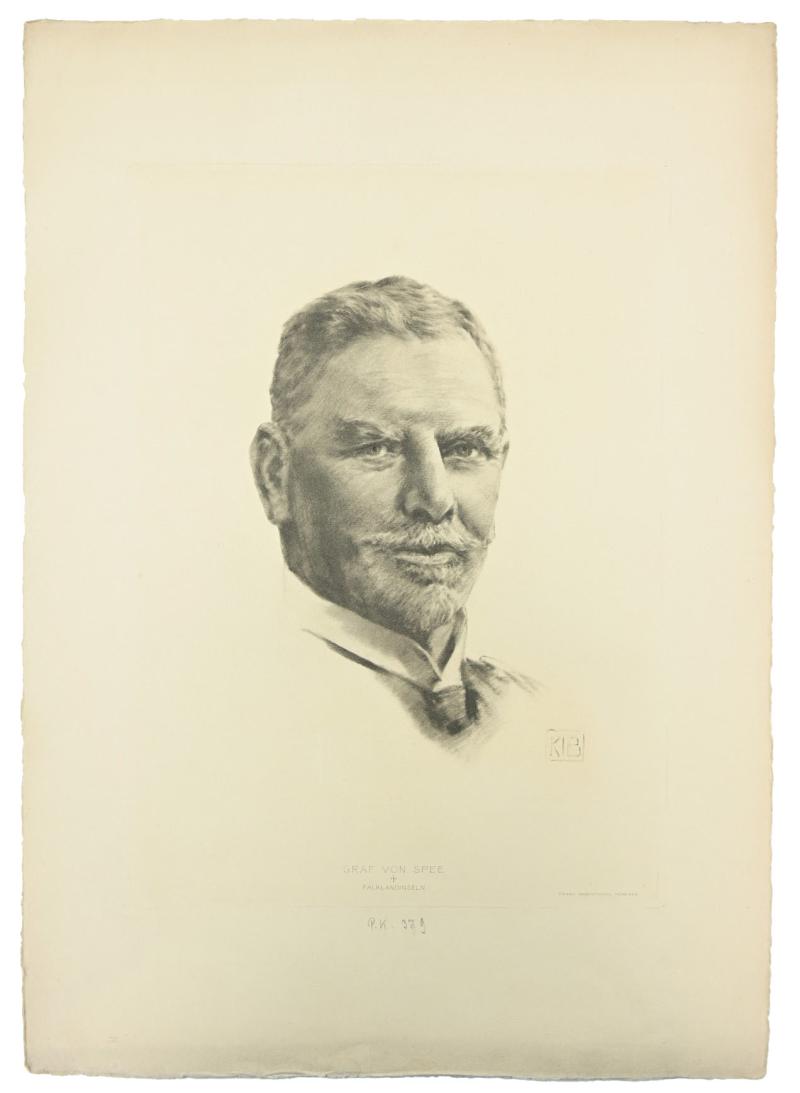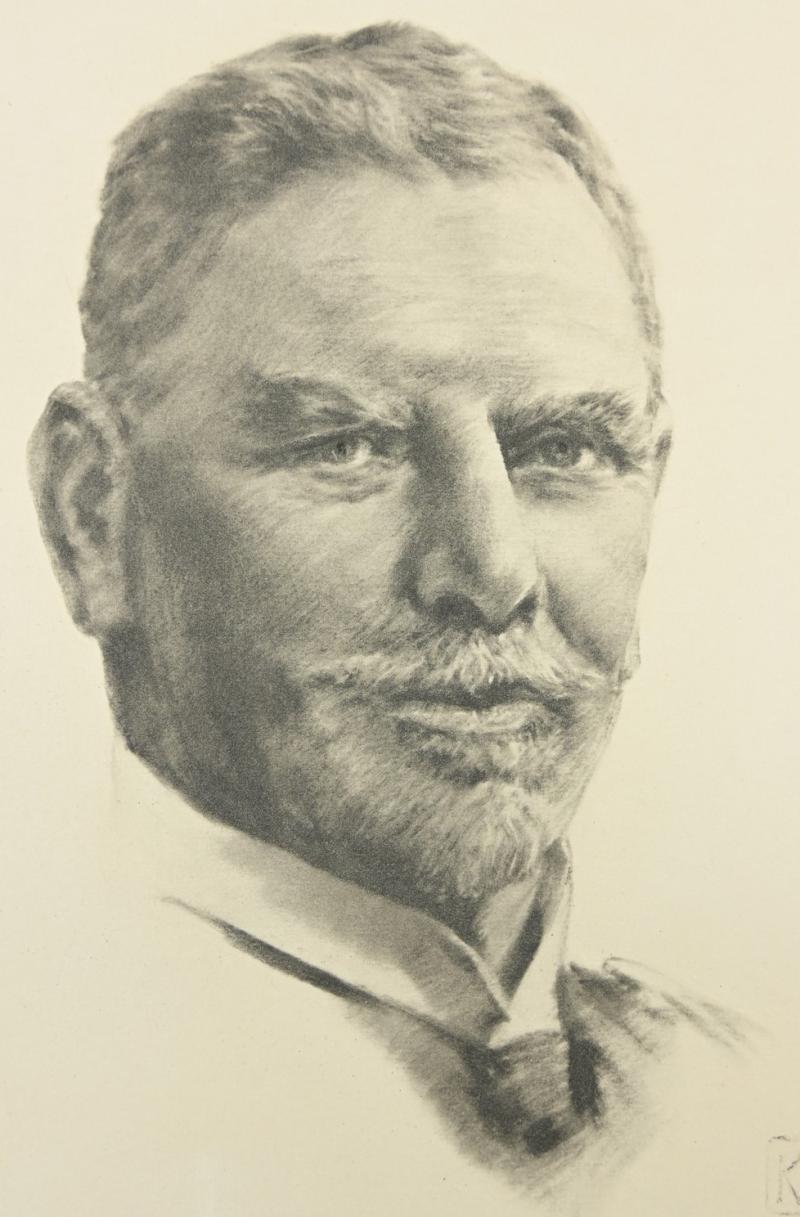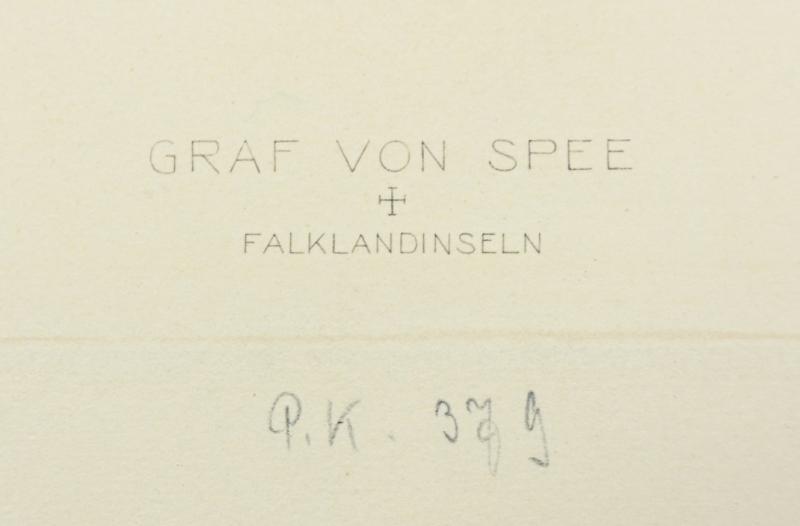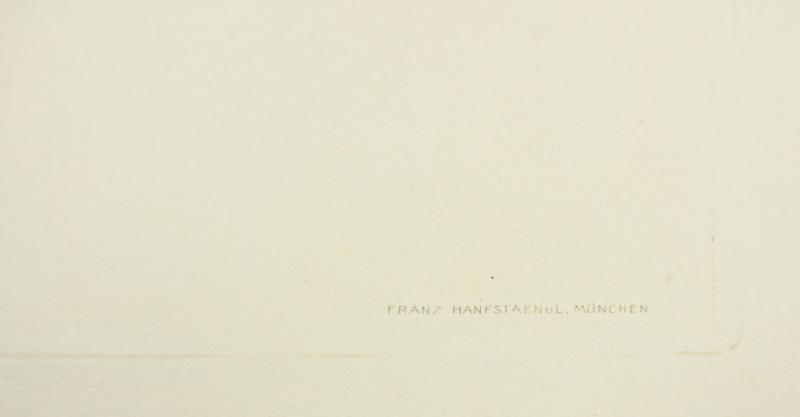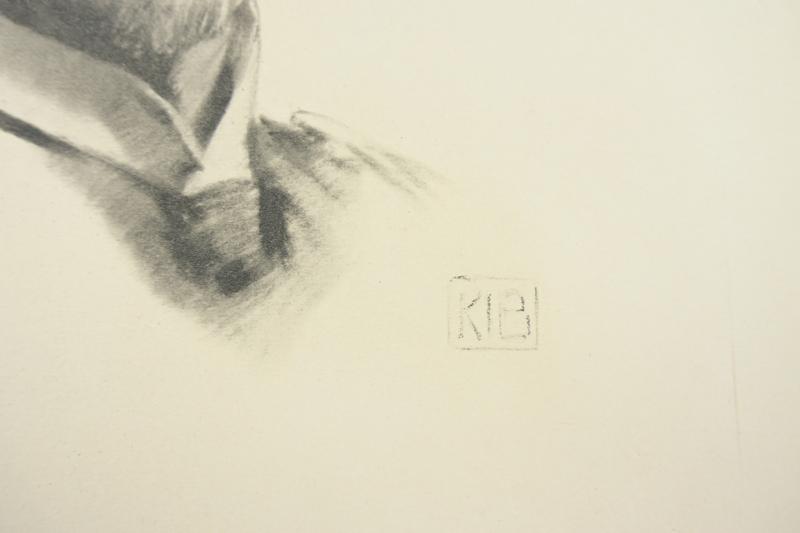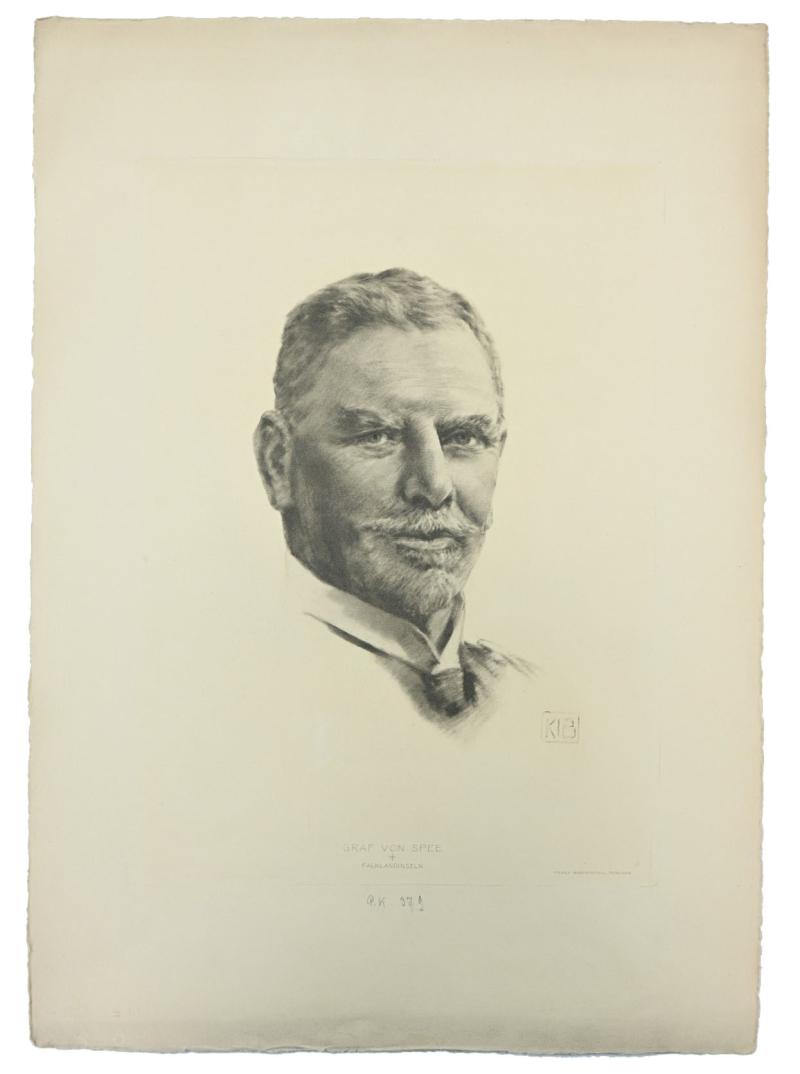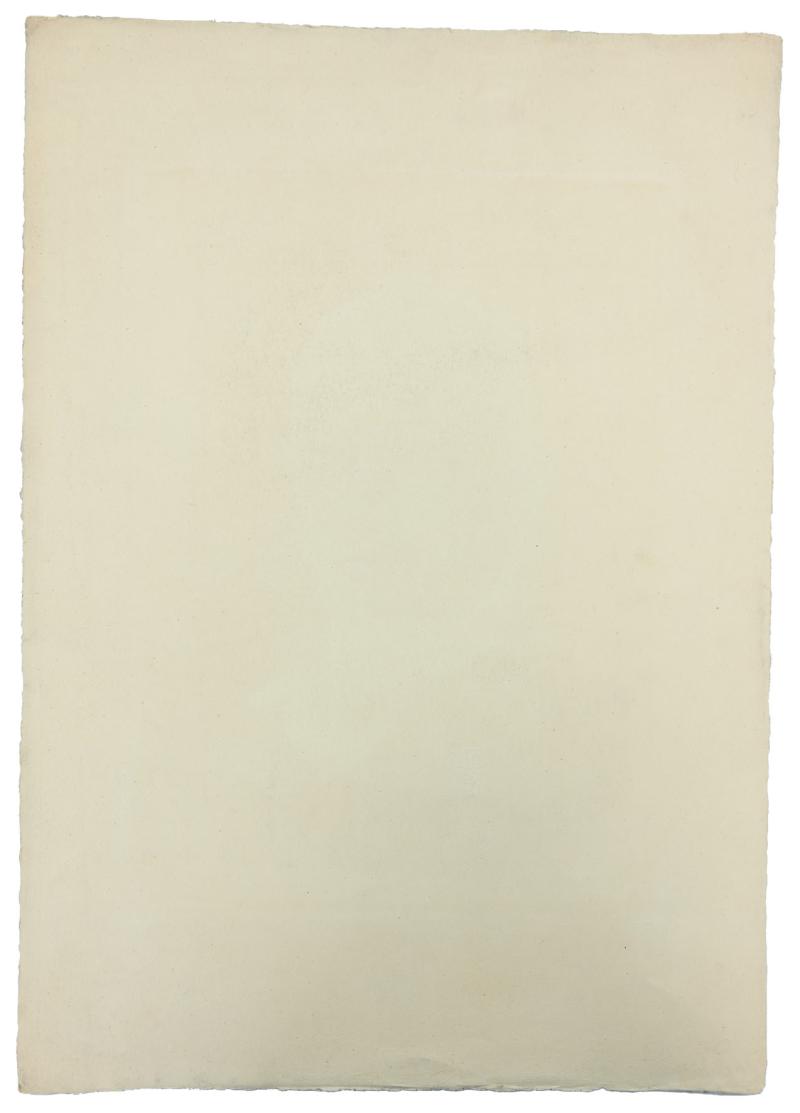German Portrait Print/Litho of Admiral Graf von Spee by K.J.Böhringer
In a very good condition and rare to find a Print of the charcoal drawing made by K.J. Böhringer of Admiral Graf von Spee.
The print comes in a size of 37x53cm and is uncut. The paper contains the pressing for a framework.
Maximilian, Graf von Spee (born June 22, 1861, Copenhagen, Denmark—died December 8, 1914, off Falkland Islands), admiral who commanded German forces in the battles of Coronel and the Falkland (Malvinas) Islands early in World War I. He entered the German navy in 1878, and in 1887–88 he commanded the port in German Cameroon. In 1908 he was made chief of staff of the German Ocean (North Sea) Command, and at the end of 1912 he was appointed commander of the Far Eastern Squadron.
When World War I began, Spee was in the Caroline Islands. Japan’s declaration of war against Germany (August 22, 1914) caused him to abandon plans for operations in Chinese waters and to head for South America. After bombarding Tahiti on September 22, he destroyed a hastily assembled British cruiser squadron on November 1, 1914, off Coronel, Chile.
Two battle cruisers under Vice Admiral Sir Frederick Doveton Sturdee were sent from England against Spee. They arrived at Port Stanley in the Falkland Islands on December 7, 1914. Spee, who had left Chile on November 26, appeared off the Falklands on December 8, perhaps not knowing that the British squadron was there. The Germans were defeated; Spee’s flagship, the armoured cruiser Scharnhorst, went down with all hands.
This rare litho comes directly from the famous publishing house 'Franz Hanfstaengl' from Munich were it was discovered last year.
Franz Hanfstaengl was one of the intimate followers of Adolf Hitler.
Hanfstaengl and Hitler remained close through the 1920s and early 1930s.
He considered Hitler a diamond in the rough, lacking refinement and social skills. He took it upon himself to do the polishing. Introducing Hitler to Munich’s high society, he helped finance the publication of Mein Kampf and, dollar rich in inflation-hit Germany, bankrolled the NSDAP’s newspaper Völkischer Beobachter.
Code: 70113
375.00 EUR



